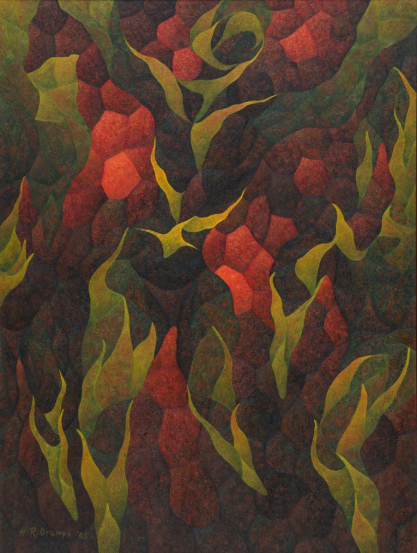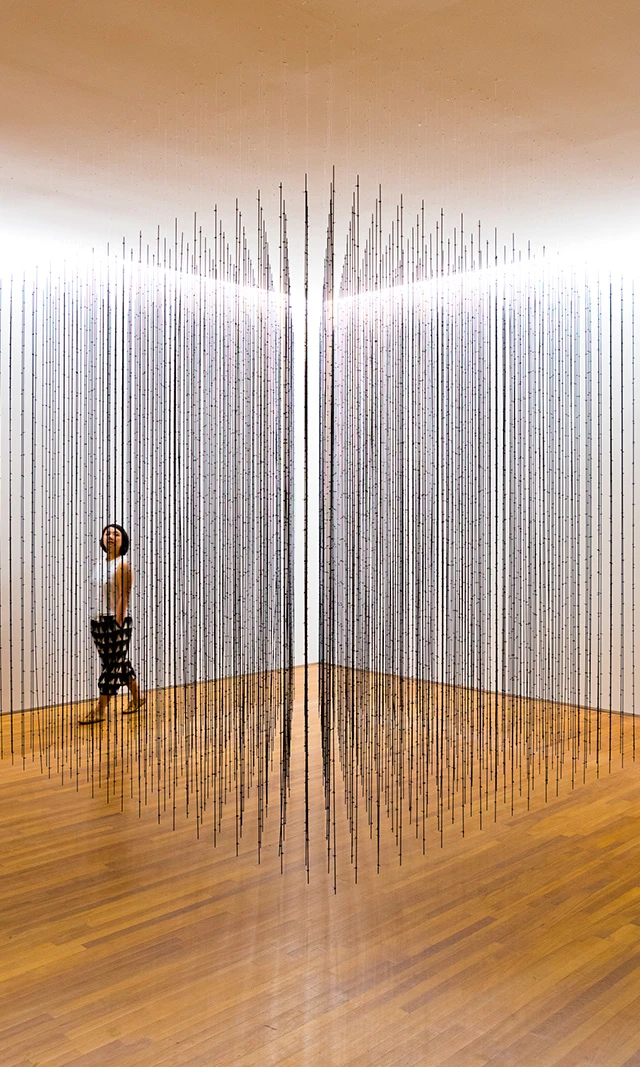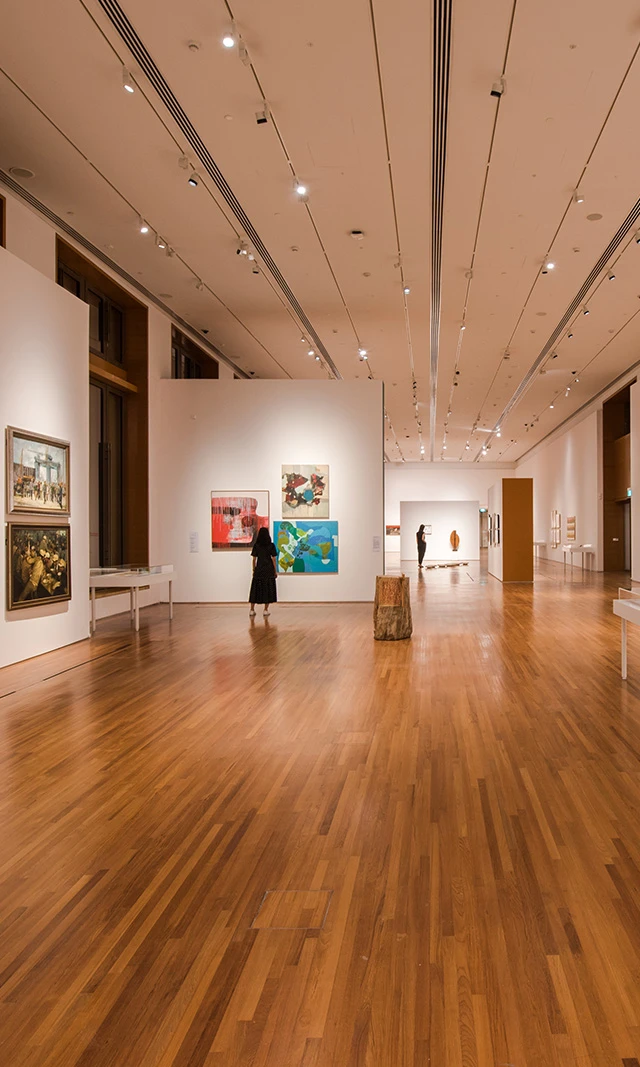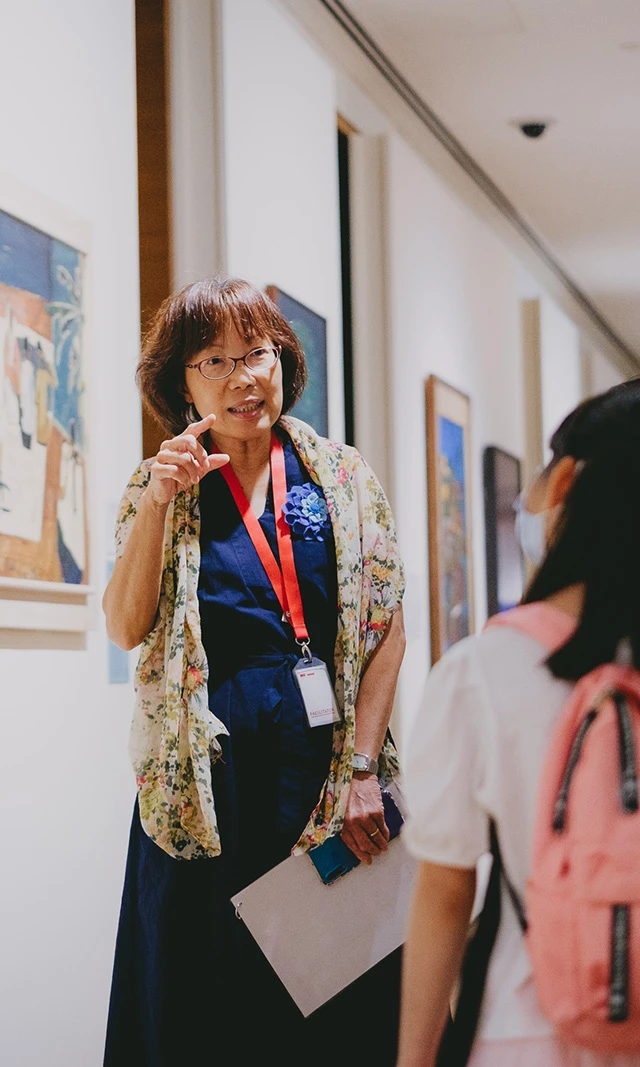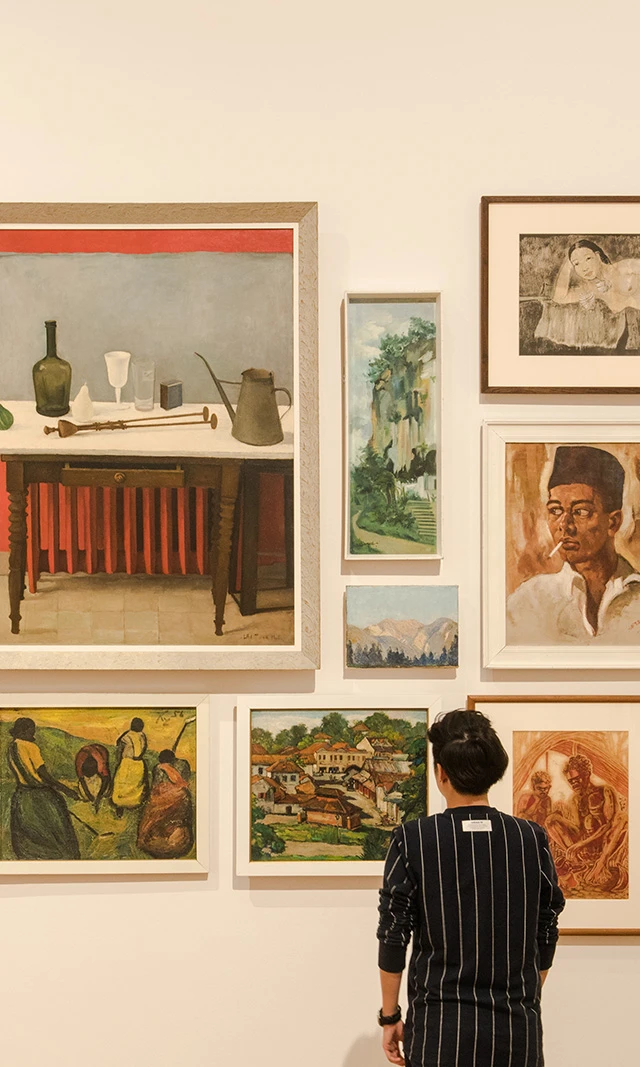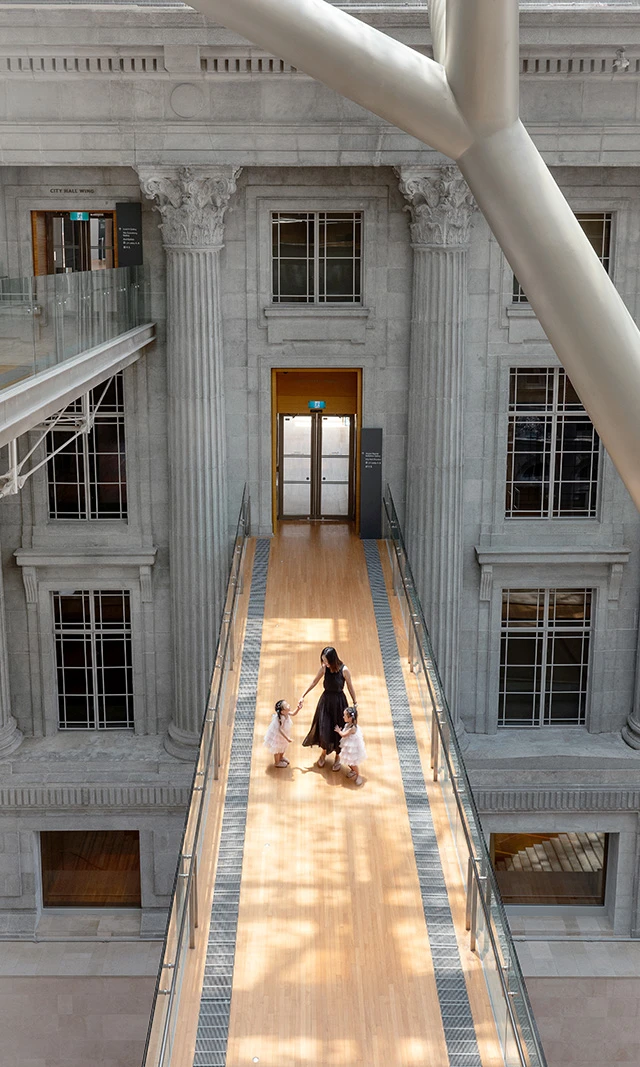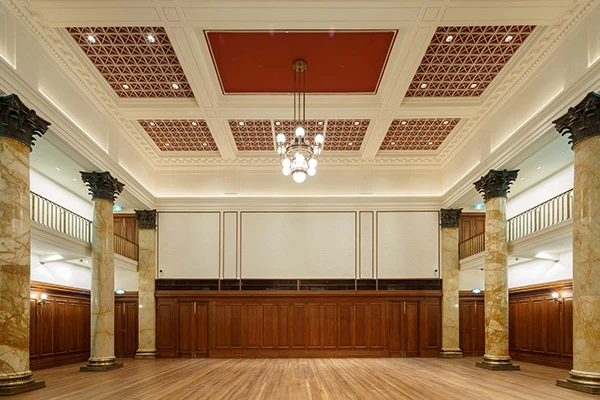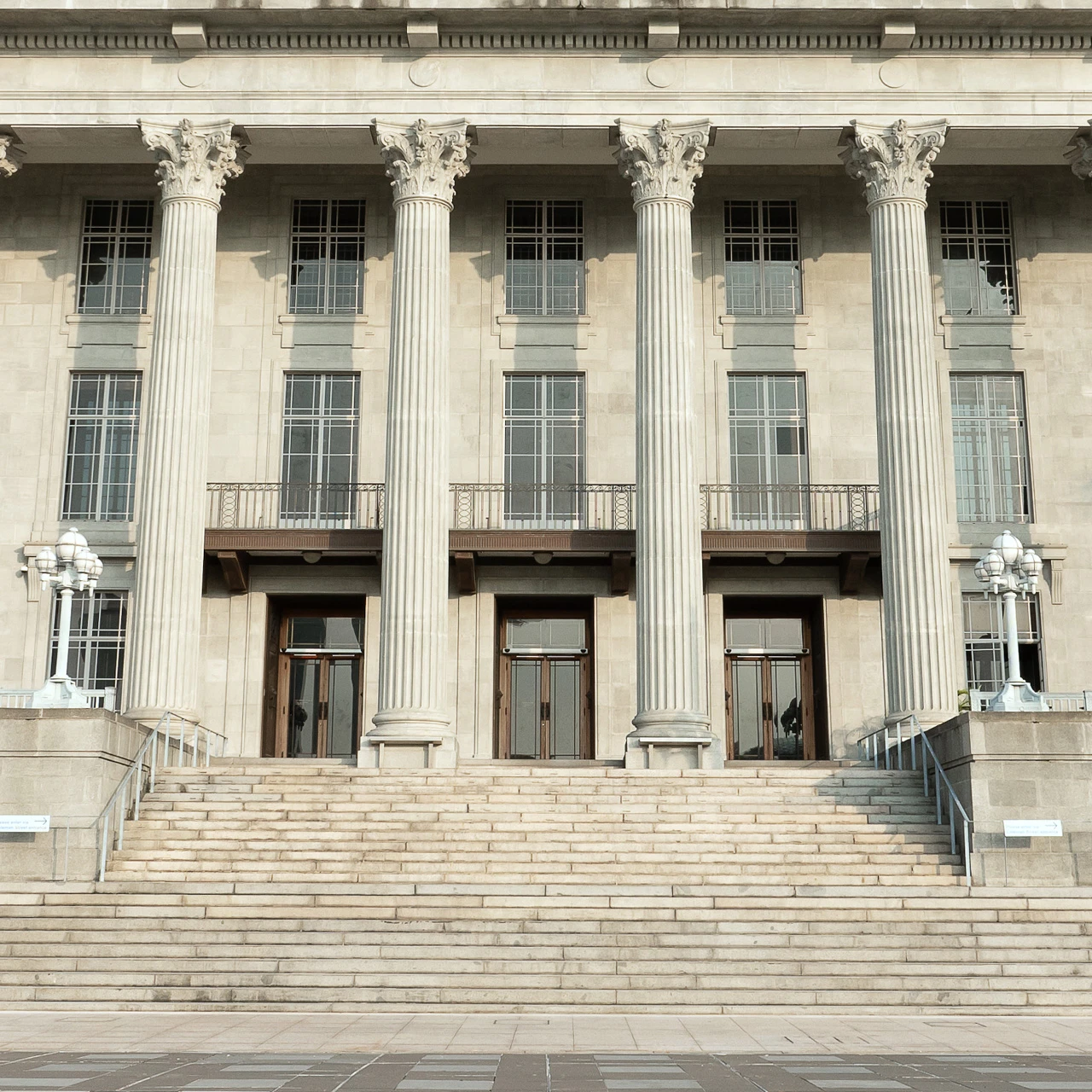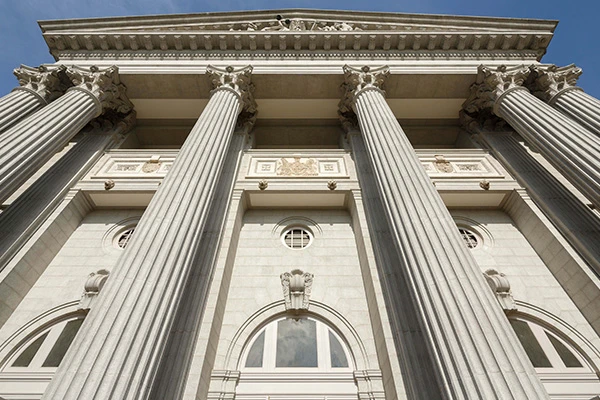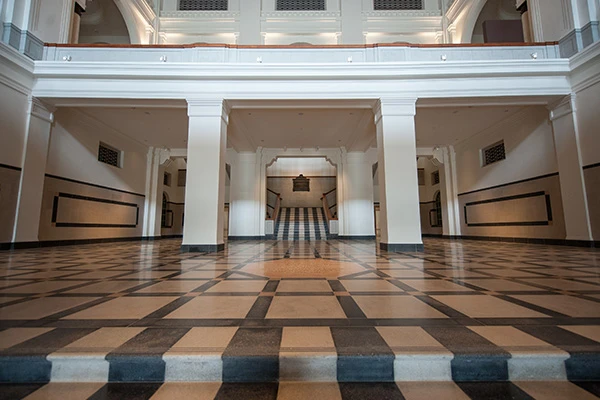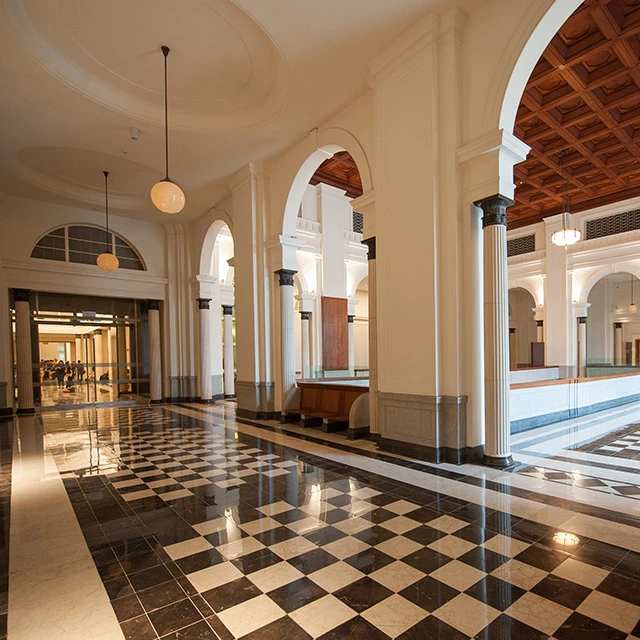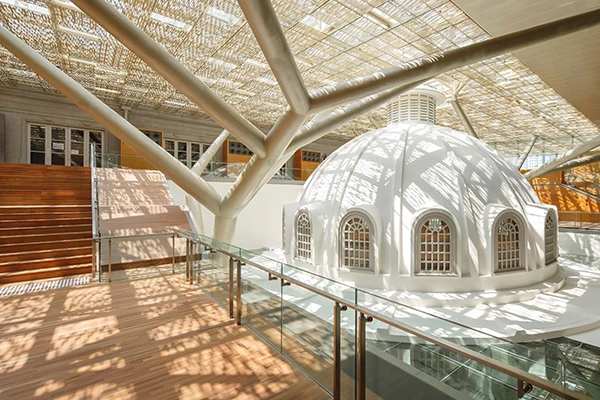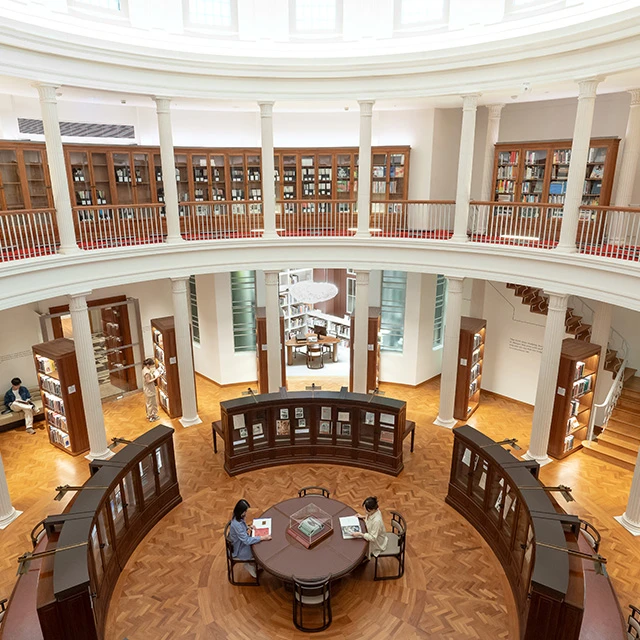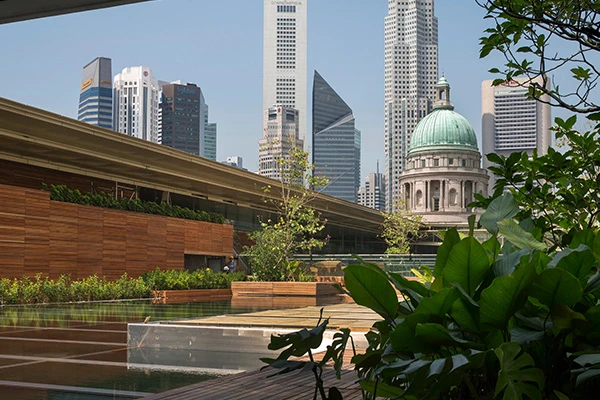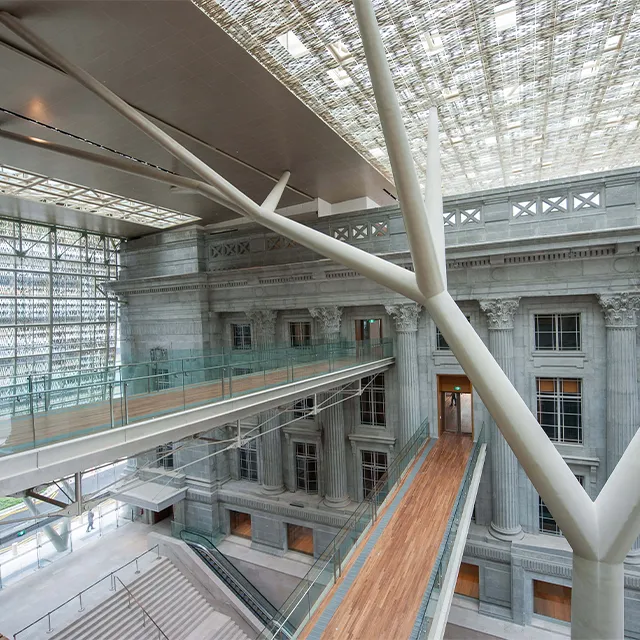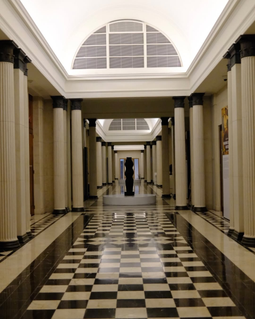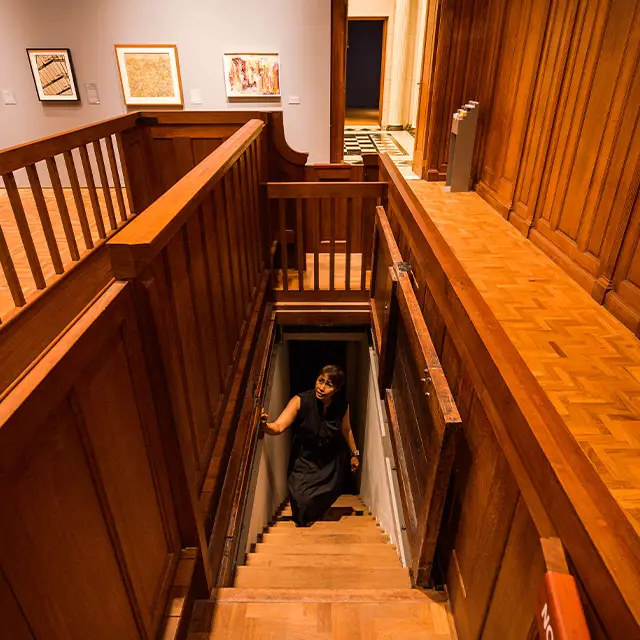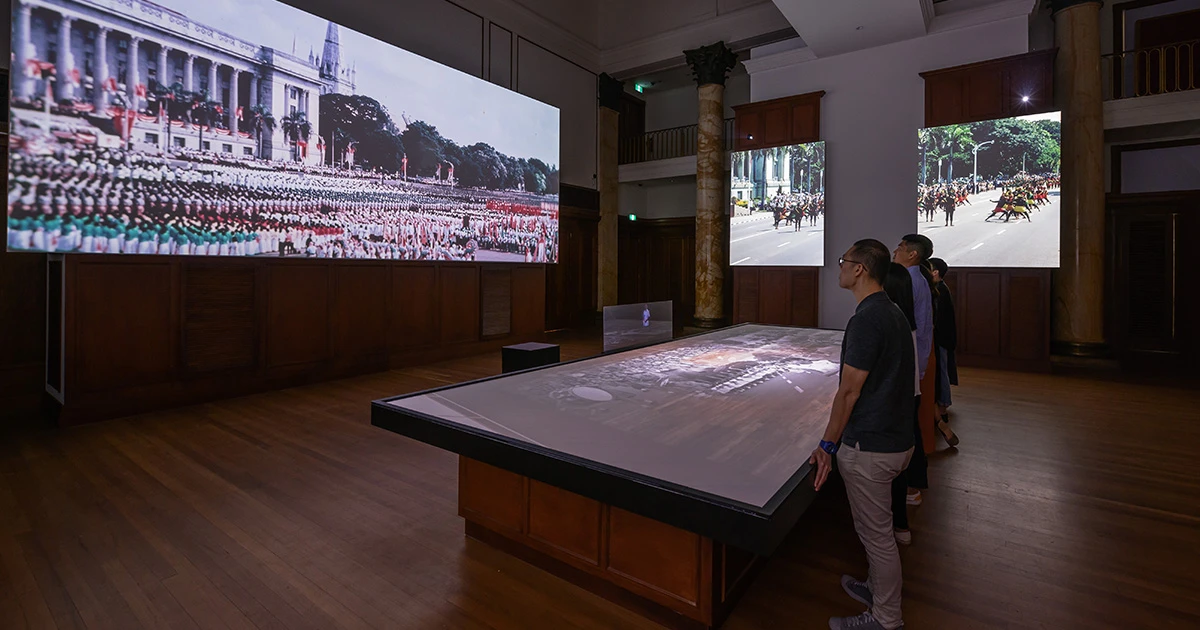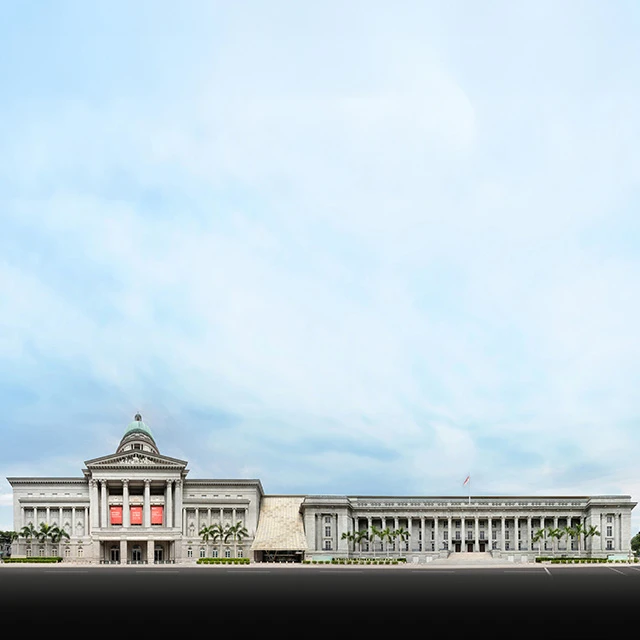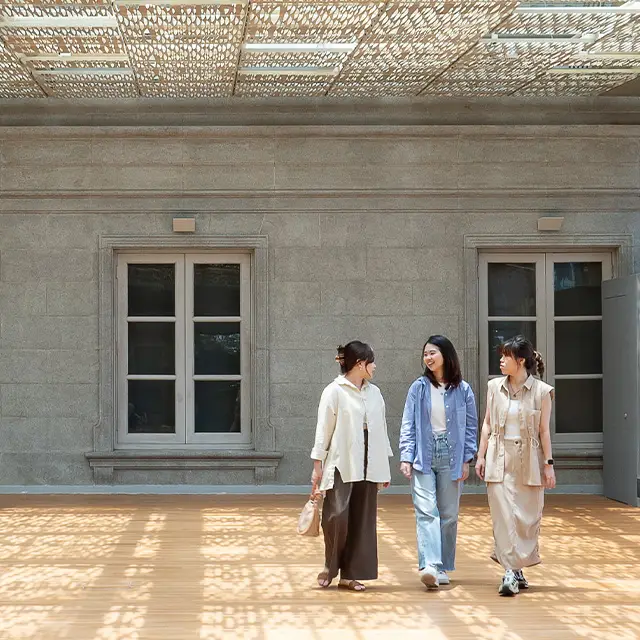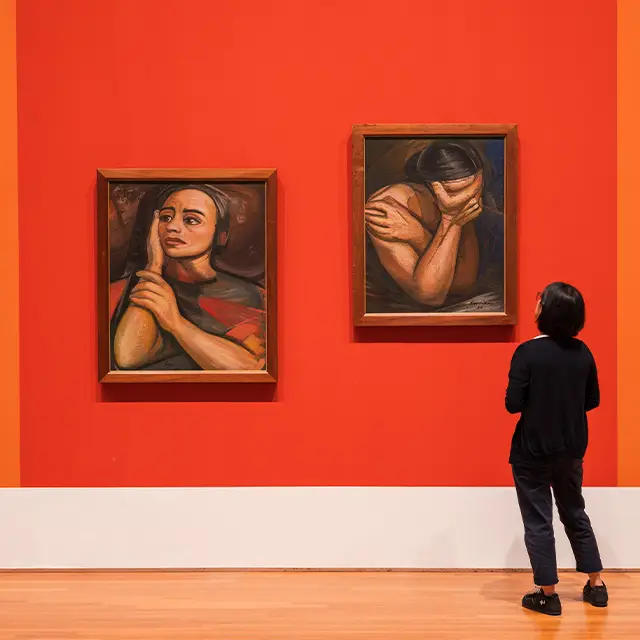Our Architecture & History

National Gallery Singapore houses its collection of Southeast Asian modern art within two national monuments: the former Supreme Court and City Hall.
The last neoclassical building to be built in Singapore, the five-storey former Supreme Court building consists of four blocks surrounding a central rotunda with a dome, originally used to house a circular law library.
Formerly known as the Municipal Building and completed in 1929, City Hall has witnessed many important events such as the surrender of the Japanese and the swearing in of Singapore’s first cabinet. The four-storey building has a symmetrical layout, with two open courtyards and a front facade flanked by 18 three-storey high Corinthian columns facing the Padang.
#NationalGallerySingapore
NationalGallerySingaporeOur History
Chapter 1 of 9: Early development
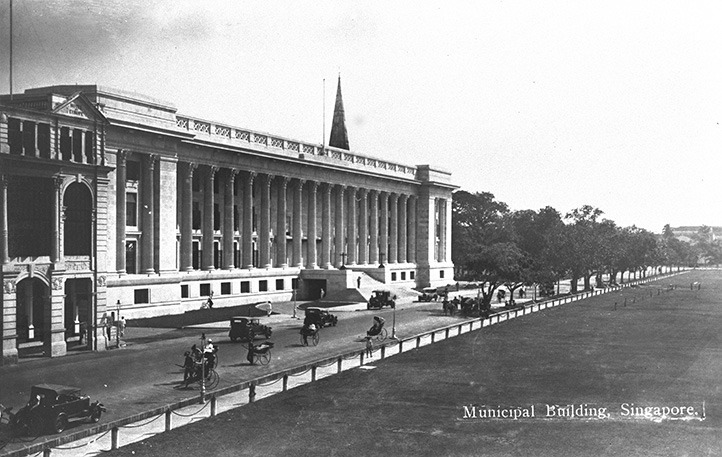
Chapter 2 of 9: The Great Depression
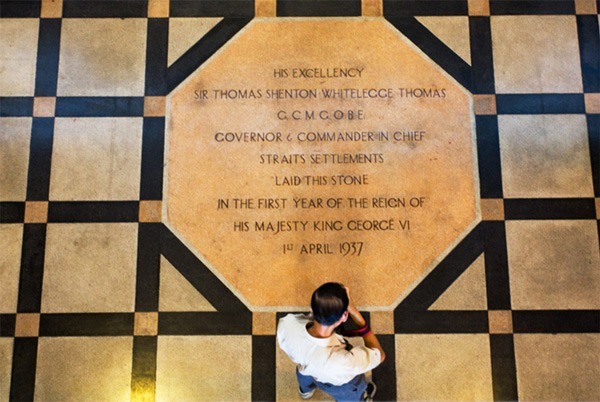
Chapter 3 of 9: Pre-war period
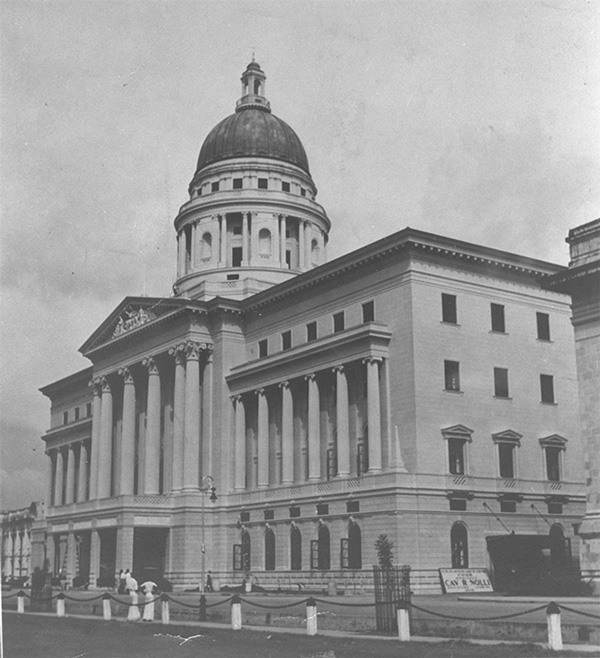
Chapter 4 of 9: World War II (1939—1945)
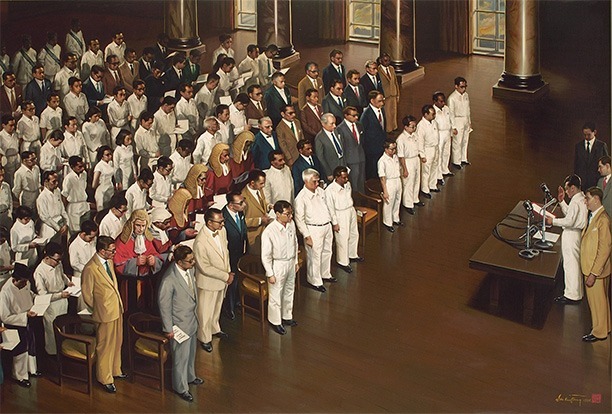
Chapter 5 of 9: Post-war period
Chapter 6 of 9:Office to Court of Law
Chapter 7 of 9: National monuments
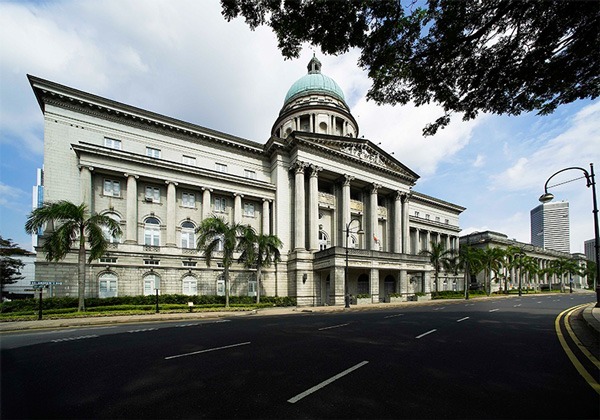
Chapter 8 of 9: A new beginning
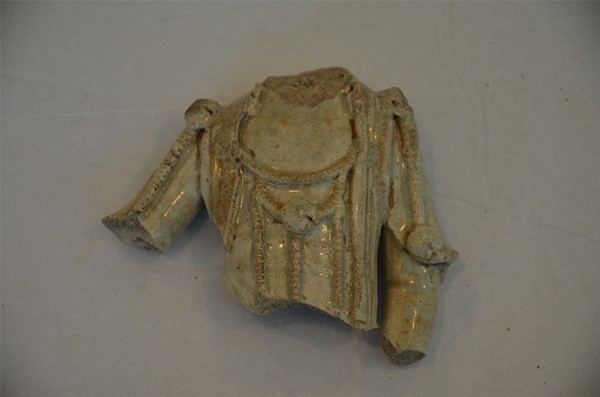
Chapter 9 of 9: Construction & restoration
Timeline
1920s
A growing Civic District
The 1920s is a time of economic prosperity and rapid population growth..
World War I leaves Southeast Asia virtually untouched, and post-war trading in rubber and tin reaches its peak.
In Singapore, the British government embarks on a nation-wide building programme, resulting in the completion of many important civic buildings, including the General Post Office (1928), the Municipal Building, and Clifford Pier at Collyer Quay (1931).
1920s
The need for new premises
As Singapore’s building and infrastructural demands grew, the administrative functions of the municipality also expanded to meet the needs of the swelling population.
Established in 1856, the Municipal Council was responsible for Singapore’s transportation and infrastructural needs, which included the construction of roads and bridges, and the supply of water, gas, lighting, and electricity.
Originally housed at the old Town Hall at Finlayson Green, the premises of the Municipal Council had become increasingly inadequate over the years.
1920
Acquiring land within the Civic District
In 1920, the Municipal Council bought over the land next to the Europe Hotel.
1925
Acquisition of the site
The Commissioners erect a new building for the Municipal Council in 1925.
1926
Design of the Municipal Building
Alexander Gordon’s plans for a new Municipal Building are approved. The two remaining bungalows next to Europe Hotel are demolished and construction commences.
Timeline
1929

Completion of Municipal Building
The Municipal Building is completed and declared open on 23 July 1929. The building houses the Treasury; the Health, Town Cleaning, Sewerage, and Sanitary departments; and the offices of the Municipal architects, engineers, and surveyors. Construction costs $1.605 million Straits dollars.
1932
Closure of Europe Hotel
Europe Hotel runs into financial hardship and ceases operations. It is demolished in 1934..
1932
Need for a new Supreme Court
Roof of Supreme Court at Maxwell House collapses after a heavy downpour.
Timeline
1935
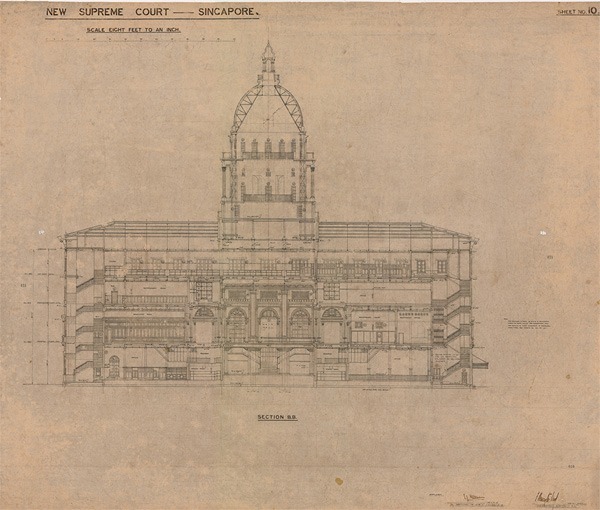
Courtesy of National Archives of Singapore
Design for a new Supreme Court
The government acquires the site of the demolished Europe Hotel for the Supreme Court. The design for the new building by Frank Dorrington Ward, Chief Architect of the Public Works Department, is unveiled to the public.
Plans for a new Supreme Court were approved and Frank Dorrington Ward’s design for the building was unveiled to the public.
1937

©Tan Yih Siang
Construction of the new Supreme Court
Construction for the Supreme Court Building commences in 1937, eight years after the completion of the Municipal Building.
On 31 January, piling work for the Supreme Court is completed.
On 1 April, Governor of the Straits Settlements, Sir Thomas Shenton Whitelegge Thomas, lays the foundation stone of the Supreme Court building. The foundation stone is to be uncovered in the year 3000 to reveal a sealed cylindrical brass casket containing six Singapore newspapers dated 31 March 1937 and a handful of coins.
Timeline
1939

Lisa Brunner Collection. Courtesy of National Archives of Singapore
Opening of the Supreme Court
On 30 July, records weighing 18 tonnes are moved from the old courthouse to the new Supreme Court building.
On 3 August, Sir Shenton Thomas opens the Supreme Court building and hands it over to Chief Justice Sir Percy McElwaine. The building cost $1.75 million Straits Dollars to construct.
The Supreme Court building is the last neoclassical architecture built in Singapore.
World War II begins on September 1, 1939, with the German invasion of Poland.
1942
Japanese Occupation
The Municipal Building is opened to the public for shelter during the Japanese raids in 1942.
The Japanese occupies Singapore, renaming it as Syonan. The headquarters of the Syonan Tokubetsu Shi (Municipal Administration) was set up in the Municipal Building Singapore and Supreme Court was used as the Syonan Supreme Court.
1945
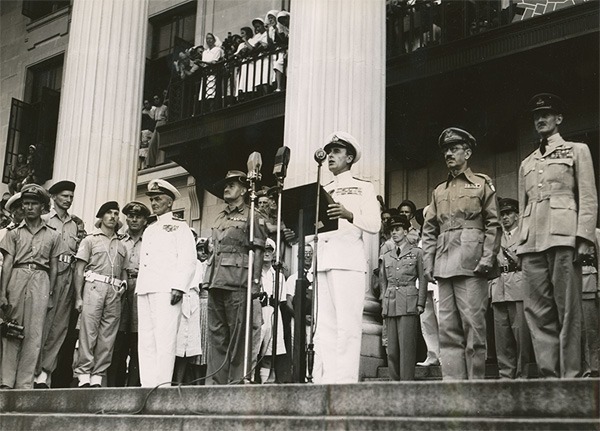
Courtesy of Image Bank WW2 – NIOD
Japanese surrender
World War II ends.
German armed forces surrender unconditionally to the Allies on 7 May 1945.
Two weeks later, another Japanese surrender ceremony is held in the Municipal Building. Admiral Lord Louis Mountbatten accepts the surrender of the Japanese forces on 12 September 1945, on behalf of the Allied forces.
Timeline
Uncover the fascinating story of Georgette Chen (1906−1993). Her exceptional life experiences as a professional female artist living and working around the world shaped her practice and left a lasting legacy in the development of visual arts in Singapore.
1951
Town to City
Singapore is proclaimed a City of the British Commonwealth and the Municipal Building is renamed the City Hall building.
1959

1994. Oil on canvas, 216 x 306 cm.
Collection of National Museum of Singapore. Courtesy of the National Heritage Board.
Self-governance
5th June
Prime Minister Lee Kuan Yew and members of his Cabinet take their Oaths of Allegiance and Oaths of Office on 5 June 1959 in the City Hall Chamber.
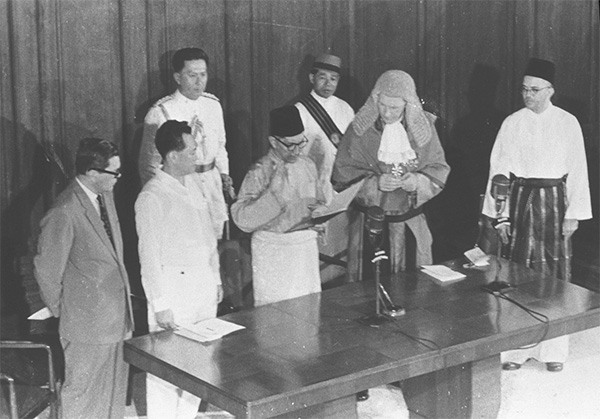
Ministry of Information and The Arts Collection,
Courtesy of National Archives of Singapore.
Self-governance
3rd Dec
Yusof Bin Ishak is inaugurated as Singapore’s first head of State in the City Hall Chamber on 3 December 1959. Singapore's national flag and anthem are unveiled on the same day.
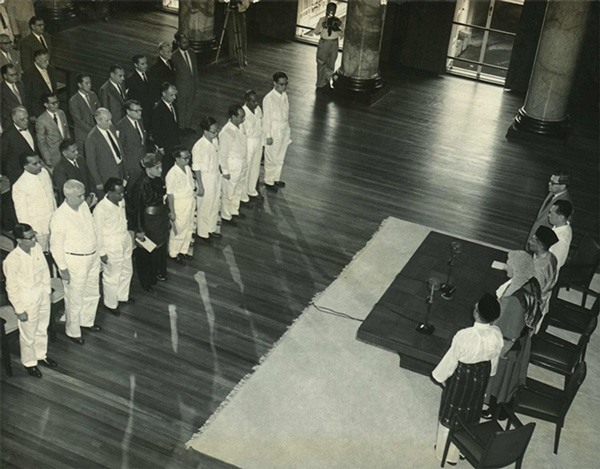
Yusof Ishak Collection, Courtesy of National Archives of Singapore.
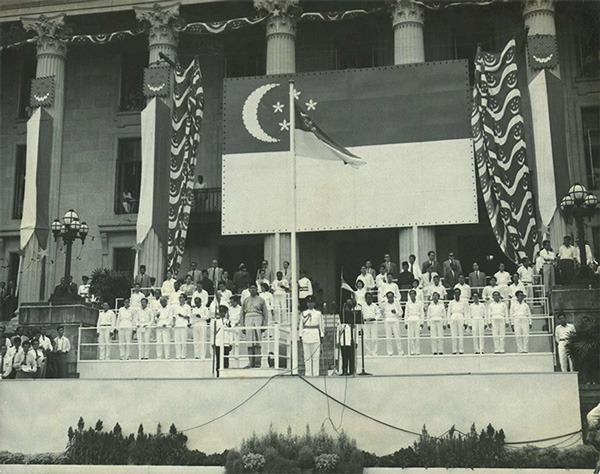
Yusof Ishak Collection, Courtesy of National Archives of Singapore.
1960
Prime Minister’s Office at the City Hall
The offices of the Prime Minister, the Ministry of National Development, and the Ministry of Culture are set up in the City Hall building.
The Preservation of Monuments Board is established in 1971
1965
First Malayan-born Chief Justice of Singapore
Wee Chong Jin is appointed the first Malayan-born Chief Justice of Singapore, marking a milestone in Singapore’s judicial history where his predecessors are British.
Timeline
1977
Office to Court of Law
Prime Minister Lee Kuan Yew moves part of his office and the whole of the Cabinet office from City Hall building to the Istana annex. Foreign Minister Sinnathamby Rajaratnam takes over Mr Lee’s office.
1986
Expansion
Additional courtrooms are constructed in the City Hall building to accommodate the increased workload of the Supreme Court.
1989
Becoming the Gallery
Advisory Council on Culture and the Arts (ACCA) recommends in a report, to develop Singapore into an international centre for the arts.
Museum development was identified as a key strategy in the report, the Council foresaw the need for Singapore for eventually have a National Gallery to house its National Collection and to have a venue for international art exhibitions and fairs.
1990
New Head of Judiciary
Wee Chong Jin retired as Chief Justice and Yong Pung How was appointed as the new Head of Judiciary.
Timeline
1992
Historical monuments
City Hall and former Supreme Court buildings were declared national monuments.
Timeline
2005

Announcement of a National Gallery for Singapore
Prime Minister Lee Hsien Loong announced at the National Day Rally Speech, that City Hall and former Supreme Court buildings would be converted into the new National Gallery Singapore.
2007
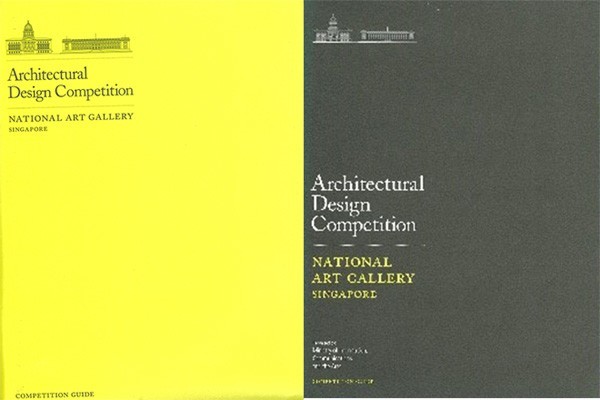
Design competition
A two-stage international architectural design competition for the National Gallery is launched.
There are a total of 111 entries from 29 countries worldwide. Five proposals are shortlisted at the end of Stage 1. The top three winning schemes for the competition are announced on 29 August 2007.
A public exhibition is held in October 2007.
2008
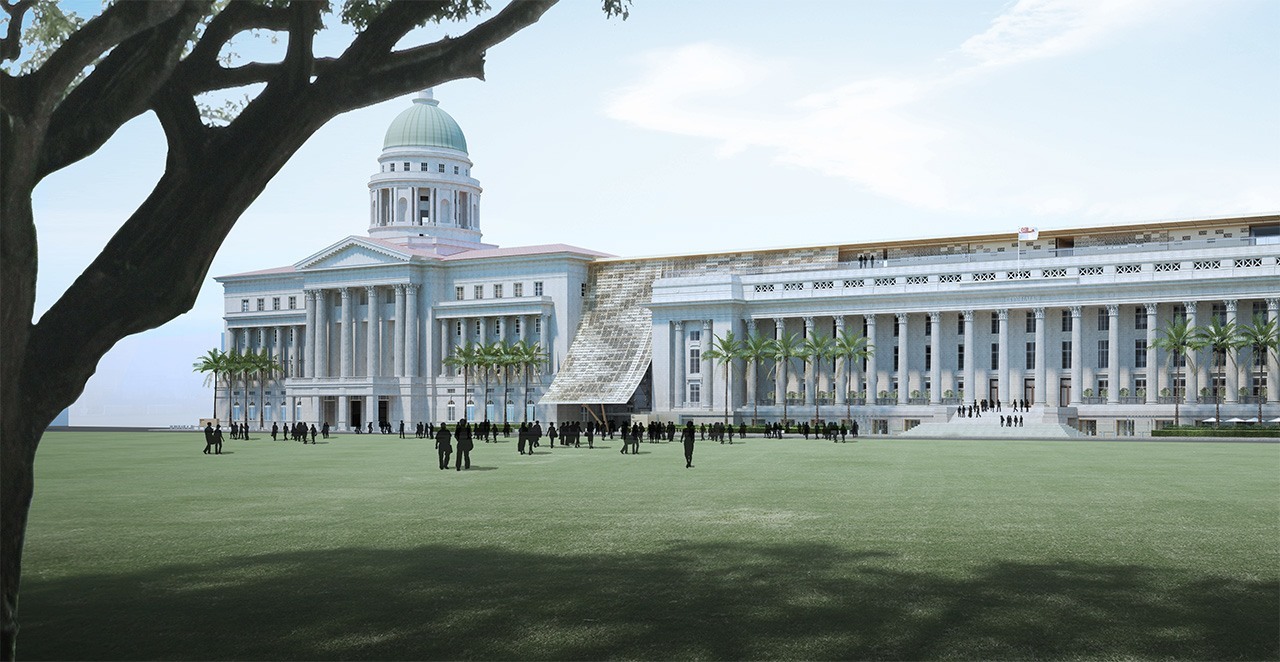
©studioMilou Singapore 2013 / National Gallery Singapore
Winner of design competition announced
studioMilou Singapore, in collaboration with CPG Consultants Pte Ltd, is selected as the winning entry for the architectural design competition.
Timeline
2009
Archaeological finds
Two archaeological digs are held on the site of National Gallery Singapore. The digs uncover artefacts from the 14th to the 19th centuries, shedding light on the rich trade networks and livelihoods of the past.
2010

Collection of National Museum of Singapore.
Appointment of construction contractor
Takenaka-Singapore Piling joint venture (TCSP) is appointed as the main construction contractor for the project.
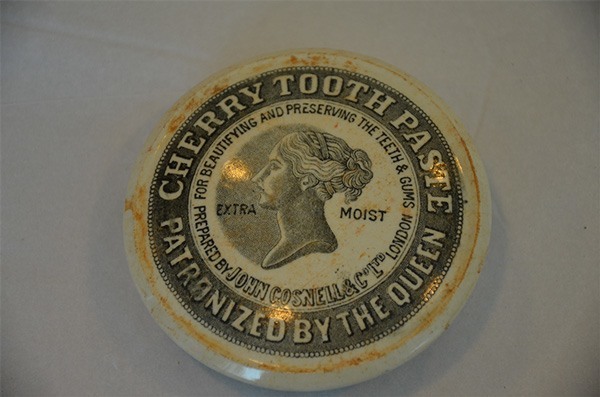
Collection of National Museum of Singapore.
Appointment of construction contractor
Takenaka-Singapore Piling joint venture (TCSP) is appointed as the main construction contractor for the project.
2012
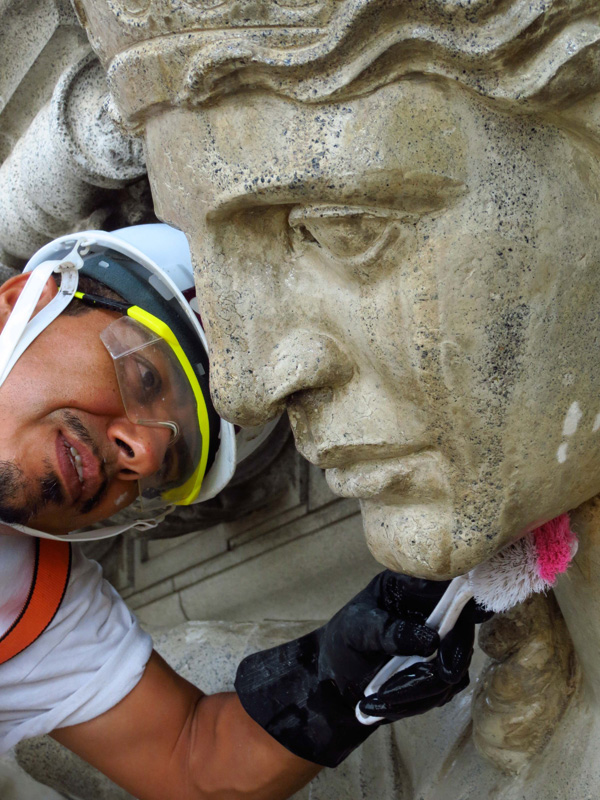
Restoration
Restoration works on the Supreme Court’s tympanum commences.
2014
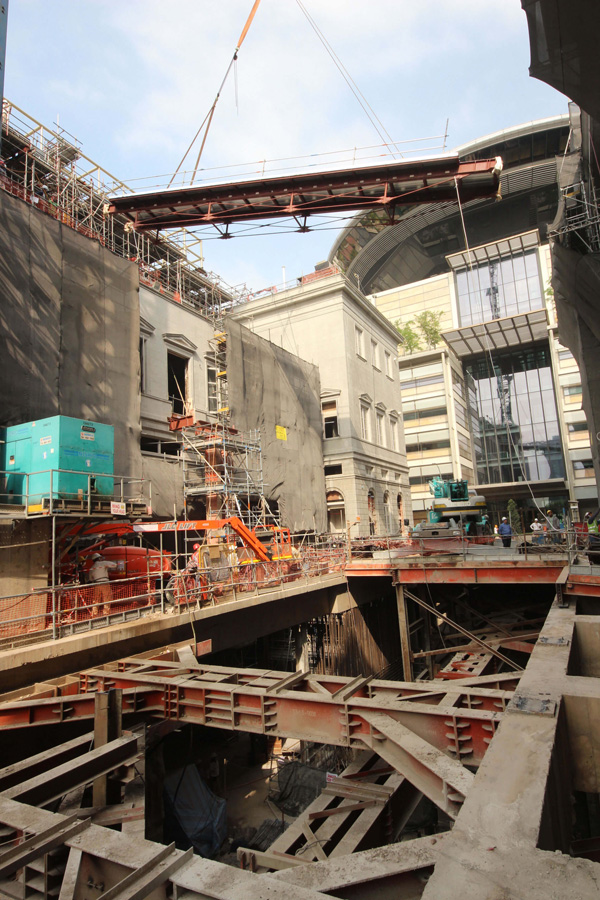
Building the link bridges
The first of the link bridges that connect City Hall and the former Supreme Court building is installed.
2015 to now
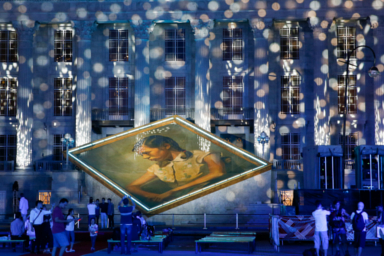
Opening of National Gallery Singapore on 27 November
Grand Opening of National Gallery Singapore with Guest of Honour, President Tony Tan.
Today, the Gallery oversees the world’s largest public collection of Singapore and Southeast Asian modern art.
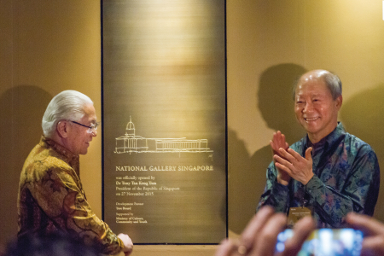
Grand Opening of National Gallery Singapore with Guest of Honour, President Tony Tan.
Today, the Gallery oversees the world’s largest public collection of Singapore and Southeast Asian modern art.
Singapore’s Civic District
Home to some of Singapore’s most notable historic buildings, the Civic District stretches from Fort Canning to the Singapore River and the seafront beyond the Padang. It was designated as an administrative zone for the colonial government in the 1820s by the Raffles Town Plan.
Today, it has transformed into a vibrant cultural and arts destination, where at the heart of it sits the former Supreme Court and City Hall – now known as National Gallery Singapore.
- National Gallery Singapore
- The Fullerton Hotel Singapore
- Asian Civilisations Museum
- Victoria Concert Hall
- High Street Centre
- Funan
- Supreme Court
- The Adelphi Shopping Mall
- St Andrew’s
Cathedral - Esplanade Theatres on the Bay, Singapore
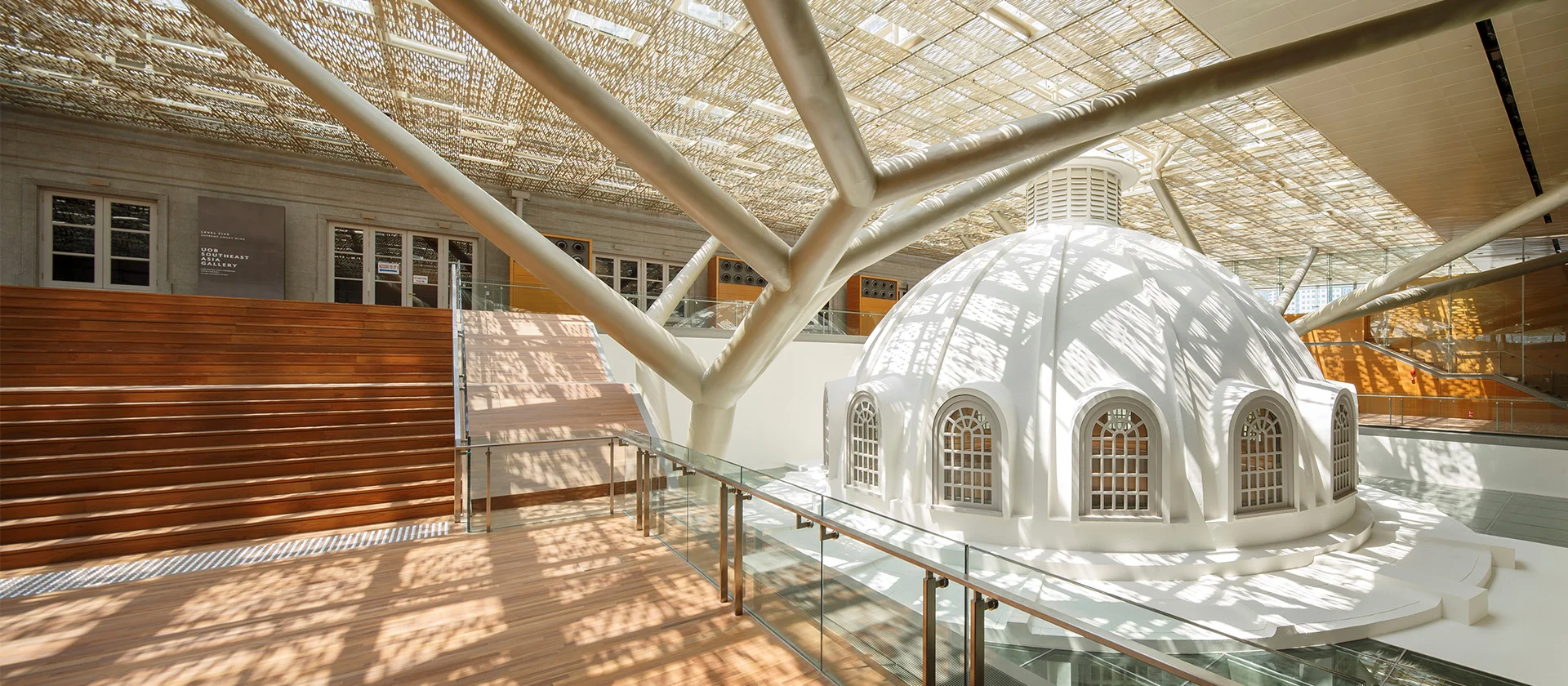
Tours & Exhibitions
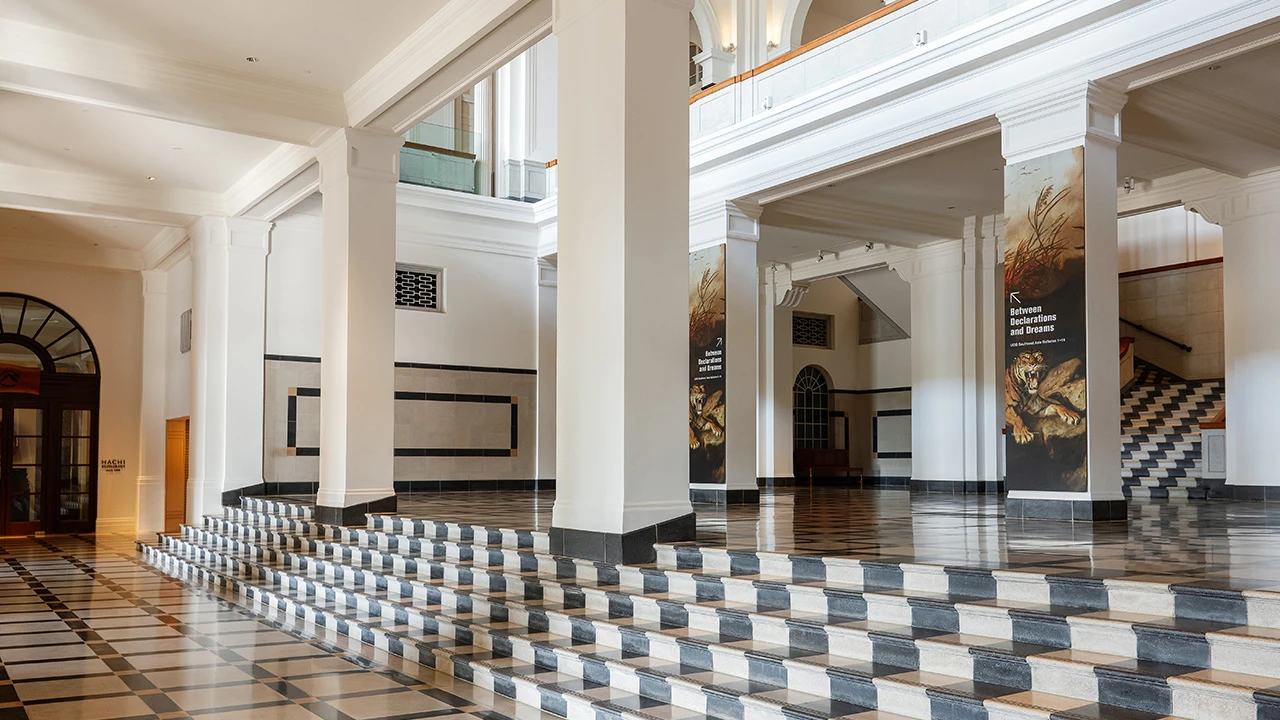
Building Highlights Guided Tour
Discover the national monuments that have stood witness to many of Singapore’s historic moments and listen to the story of a decade-long renovation that united and transformed these majestic buildings into a home for the arts.
This website uses cookies to ensure you get the best experience. View our privacy policy

